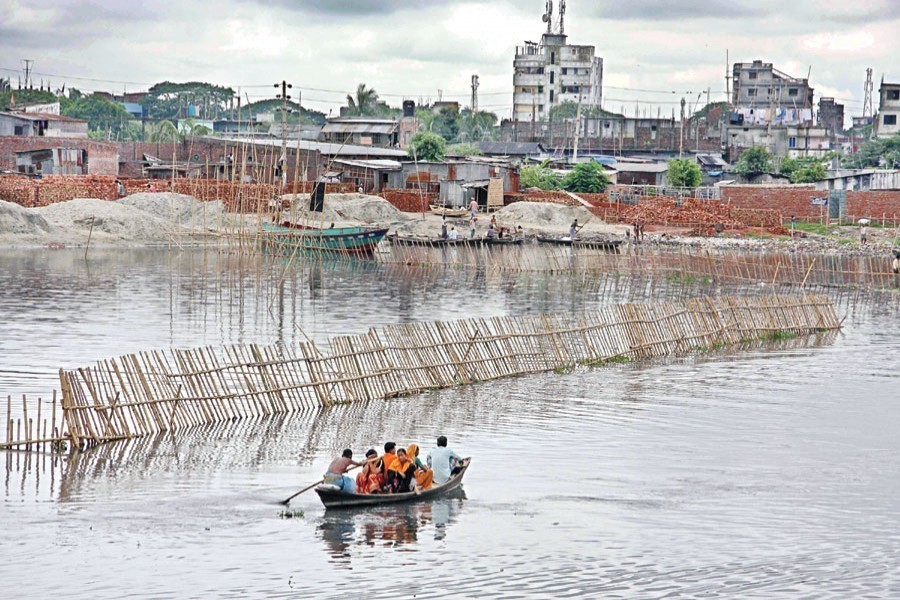
Published :
Updated :

At a time when people living on the banks of many big and mid-size rivers remain panicky for fear of being devoured by erosion, just opposite scenes are found elsewhere. River erosion this year appears to have hit the country with unusual ferocity. What surprises the river watchers is the unabated dying process of many once-mighty rivers. These rivers continue to die outin different parts of the country. Even this year's full-scale monsoon has failed to give these rivers back their earlier sprightly form. Over the decades, their dying process has proceeded to such an extent that even the nonstop heavy rainfall this monsoon has failed to give these rivers any semblance of even trickling waters, let alone rushing water flows.
Of the nearly eight hundred rivers with their distributaries and tributaries, almost one-third of them could be termed dying. They regain their brief buoyancy during the rains. Throughout the rest of the year, these rivers turn into the areas of fun and frolic engaged in by children and teenagers. The depth of water is so shallow that even the young mothers let their small babies splash in the muck-filled water. Meanwhile, they get engaged in idle gossip on the steep banks. The reason even the rain water is not capable of bringing back a lost river is conspicuous. The once-sprawling river shores haven't seen even a short pause in the recent past when they were not being encroached on. Being located in the remote rural areas, the grabbing of river shores and foreshores normally goes unnoticed by the authorities assigned to protect the rivers. A potent question: Why would they?
There are allegations that a section of dishonest staff at the local water development board offices in cahoots with the influential quarters keep encroaching on the river banks. The occupied river shores are eventually turned into croplands. Thus the dying process of a vibrant river begins in front of the very eyes of the generations of septuagenarians and octogenarians. They just watch the rituals of the death of rivers --- awestruck and speechless.
There is a river called Chandana in the Pangsha area under Rajbari district. It now stands out with all the features which are required to declare a river dead or dying. The distinction of Chandana stems from the fact that it witnesses multi-storeyed residential buildings being constructed on its two banks. These areas were allegedly occupied long ago by unscrupulous land grabbers. The river is long gone. Instead of flowing in a lively current, the water of Chandana remains stagnant. Some of its segments have merely knee-deep water, not enough for a boat to keep afloat. Besides, pools of different sizes and shapes dot the muddy river-bed. Like the rivers in death-throes found everywhere in the country, the Chandana has lost its capability to hold the monsoon rain water. In some relatively wide stretches in the past, the river has veritably shrunken into the size of canals.
During monsoons, the elderly people rue the fast decline of the Chandana. Many of them claim to have seen large 'bojra' (massive jute or paddy carrying country boats) or passenger-ferrying 'pansi' boats plying routes through the river. According to them, those were the river's golden times which have been made to get lost in the abyss of time. However, by pinning hope against hope a number of optimists dream of bringing the river back to its earlier form. They look forward to the last resort of saving a dying river --- dredging. But people close to the efforts of increasing rivers' navigability in the country know well how many ambitious dredging projects have fallen flat.


 For all latest news, follow The Financial Express Google News channel.
For all latest news, follow The Financial Express Google News channel.